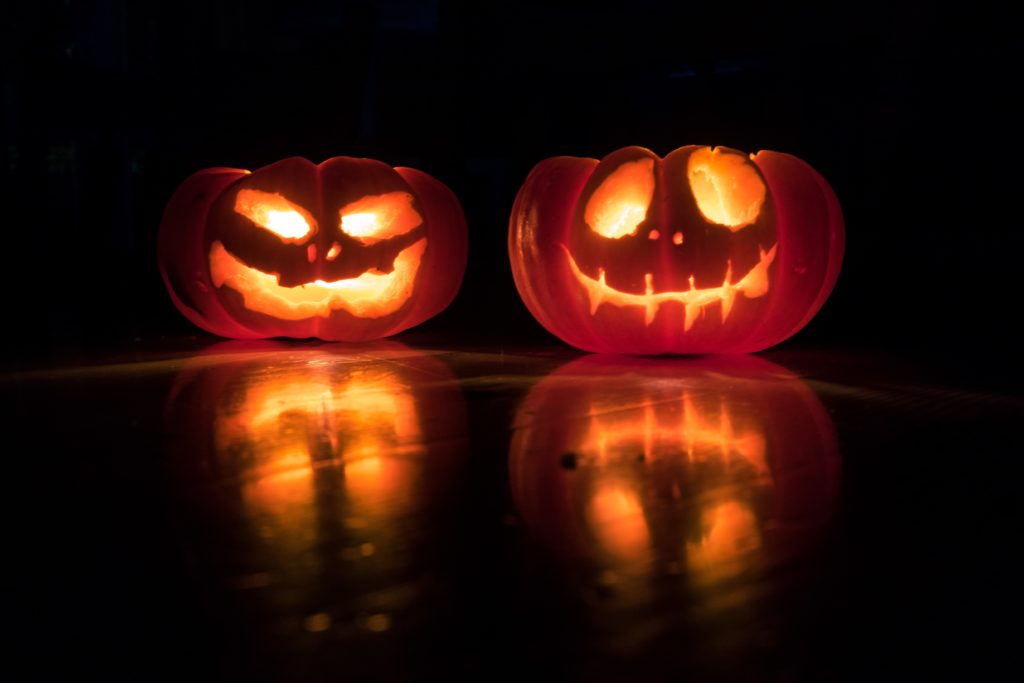Tom Graham, English and Humanities PhD student, is researching the long and complex genealogy of Satan as it relates to contemporary culture and politics. In this blog, Tom looks at how Satan’s horns and tail may have helped him go mainstream.
If you fancy dressing up this Halloween, you can order these devilish accoutrements on Amazon:
Wearing a bow tie is not particularly associated with the Devil, but sporting horns and a reptilian tail most certainly is. Why?
We might assume that the reptilian aspect connects us directly to Genesis where the serpent first tempted Eve to eat the forbidden fruit. But in fact, Genesis does not at all equate the serpent with Satan or anything demonic. It’s just a talking snake that thinks Eve should be a little disobedient. Why does it think this and where did it learn to talk? Genesis doesn’t tell us, but in the second century the Christian philosopher Justin Martyr cleared up the mystery a little by identifying the snake as Satan himself. Over a thousand years later, Martin Luther ascribed to the Satan-snake a definite motive: having been thrown out of Heaven, he was seeking revenge by spoiling God’s ultimate creation, through introducing sin into humankind.
There is, then, a long association of the Devil with snakes. But what about horns? From the earliest centuries of Christianity right through to the Middle Ages, images of pagan gods were adapted and converted into images of the Devil. This process included importing attributes such as horns. In this representation of the Celtic god Cernunnos, we find both horns (his name literally means “the horned one”) and a very fine snake:
 Cernunnos was a god of wild things and wild places, the very opposite of culture and human civilization. Thus, his uncivilized traits leant themselves to Satan, the arch enemy of the divine order of creation. The snake, having become permanently linked in the Christian imagination to one of Satan’s many guises, could be readily incorporated into the Devil’s anatomy as a reptilian tail. As for the horns, they remind us that Satan, like Cernunnos, might choose to adopt a seemingly human appearance, but that’s just for show; at heart, he remains a wild thing; uncivilized, unpredictable and dangerous.
Cernunnos was a god of wild things and wild places, the very opposite of culture and human civilization. Thus, his uncivilized traits leant themselves to Satan, the arch enemy of the divine order of creation. The snake, having become permanently linked in the Christian imagination to one of Satan’s many guises, could be readily incorporated into the Devil’s anatomy as a reptilian tail. As for the horns, they remind us that Satan, like Cernunnos, might choose to adopt a seemingly human appearance, but that’s just for show; at heart, he remains a wild thing; uncivilized, unpredictable and dangerous.
What we see playing out here in the long process of development undergone by the form and image of Satan, is a strong sense of Satan moving fluidly between human and animal forms – or, as is often the case, settling on an uneasy mixture of the two.
For St Anthony, who was subject to prolonged and repeated attacks by demonic forces when he lived as a hermit, the Devil took not only the form of a serpent but also (amongst other things) a seductive woman. Freudians will at once pounce on the coming together of phallic and libidinal imagery, but since St Anthony died precisely 1,500 years before Freud was born, we must be mindful of psychological readings that belong to an earlier period in history. What we can say, however, is that the Devil’s ability to freely mix-and-match human and animal attributes allows him to slip readily from the elite heights of theology to the common currency of folklore. This is because folklorists who seek to categorize types of folk tales have discovered that no meaningful system of classification can be established in terms of the characters of the stories; exactly the same story can be told with human or animal protagonists since, in folklore (as in demonology), the two are freely interchangeable.[1] Satan, with his inter-species shape-shifting between human and animal, fits right into this pattern.
I believe that although Satanic attributes such as horns and tail were developed by Christian philosophers – i.e. by an intellectual elite – the fluidity of human/animal attributes allowed the conceptualization of Satan to enter more freely into the popular imagination – as we see today when horns and tails are sold online as Halloween novelties. These horns and tail have, I argue, played a part in saving the Devil from languishing in dusty theological obscurity by helping him achieve vitality and renewal in the narrative structures of folklore, native storytelling, and popular culture.
[1] Simon J. Bronner (ed.) (2007) The Meaning of Folklore, USA: Utah State University Press, p.103.
Further information







